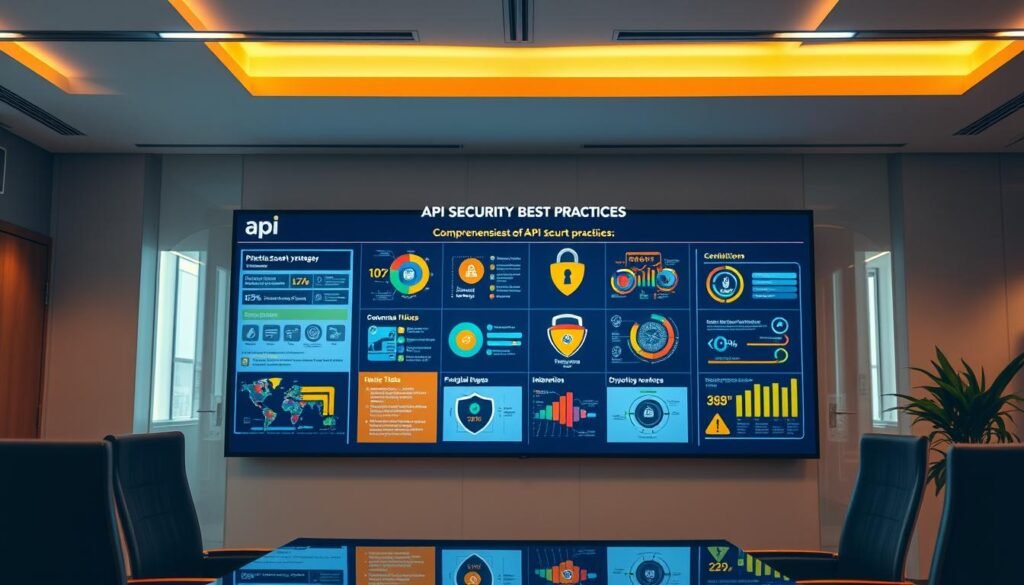APIs to Collect Data for Data Analysis are essential tools that enable seamless communication between software systems. Acting as digital bridges, APIs allow applications to exchange data and functionality without revealing their internal code—making them invaluable for developers and businesses aiming to integrate tools and automate processes efficiently.
In the world of data-driven solutions, APIs function like modular building blocks, similar to Lego pieces, simplifying how information is accessed and shared across platforms. For instance, a travel app can use APIs to retrieve real-time flight data from airline databases and present it directly to users, enhancing both speed and experience.
Understanding how APIs operate is crucial for collecting and analyzing data effectively. They use standardized communication protocols like REST or SOAP to ensure secure, structured data exchange between clients and servers. When used strategically, APIs can empower organizations to gather actionable insights, optimize operations, and drive smarter decisions.
This guide will introduce best practices for using APIs in data analysis, featuring real-world examples and technical tips. Whether you’re a developer or a data professional, mastering API integration will open new possibilities for data access, automation, and innovation.
Key Takeaways
- APIs connect software systems and enable seamless data sharing.
- They simplify integration without exposing internal complexities.
- APIs are essential for real-time data access and analysis.
- Standardized protocols like REST and SOAP ensure smooth communication.
- Mastering APIs can improve decision-making and streamline operations.
Introduction: The Role of APIs in Data Analysis
In today’s digital landscape, APIs serve as the backbone of modern data analysis. They enable seamless data exchanges between disparate systems, making it easier for businesses to access and analyze critical information. This foundational role ensures that organizations can integrate software solutions without exposing internal complexities.
The Intersection of Data and Software
Data and software are deeply interconnected, and APIs act as the bridge between them. By providing a standardized way to request and share information, APIs simplify the process of integrating data into applications. Clear documentation is essential here, as it ensures developers can use APIs effectively to improve analytical outcomes.
For example, APIs allow platforms to pull real-time data feeds, which are crucial for dynamic decision-making. This capability is particularly valuable in industries like finance, healthcare, and e-commerce, where timely insights drive success.
Evolving Trends in API Usage
The use of APIs has evolved significantly over the years. Traditional interfaces have given way to dynamic, real-time data feeds that enhance user experiences. Protocols like REST and SOAP remain popular, but emerging technologies like GraphQL are gaining traction for their flexibility and efficiency.
APIs also play a key role in enhancing transparency, security, and performance within data analysis workflows. By leveraging these tools, businesses can ensure their data is accessible, reliable, and actionable. For instance, creating interactive dashboards becomes seamless when APIs are used to integrate external data sources.
As we move forward, the role of APIs in data analysis will only grow. They are not just tools but enablers of innovation, helping organizations unlock new opportunities and stay competitive in a data-driven world.
APIs: The Bridge Between Applications and Data
Think of APIs as the glue that binds software systems together. They enable different applications to communicate and share data seamlessly. Without them, the digital world would be a fragmented mess of isolated tools.
What is an Application Programming Interface?
An application programming interface (API) is a set of rules and protocols that allows one software application to interact with another. It acts as a middleman, handling requests and responses between systems. This makes it easier for developers to integrate features without building everything from scratch.
APIs are like Lego bricks in the software world. They provide pre-built components that developers can use to create complex systems. For example, a weather app uses an API to fetch real-time data from a weather service. This saves time and effort while ensuring accuracy.
Historically, APIs have evolved from simple remote procedure calls to sophisticated tools supporting modern web applications. Protocols like REST and SOAP have standardized how APIs work, making them more reliable and efficient.
One of the biggest advantages of APIs is their modularity. Developers can reuse existing APIs to add functionality to their apps. This not only speeds up development but also reduces costs. For businesses, well-documented APIs are essential for smooth integration and collaboration.
In summary, APIs are the backbone of modern software development. They simplify complex integrations, enhance modularity, and enable businesses to innovate faster. By understanding their role, developers and organizations can unlock new possibilities in the digital landscape.
Setting Up Your API Environment
Building a robust API environment is the foundation for seamless data integration. Whether you’re a developer or a business professional, the right setup ensures efficient communication between systems. This section will guide you through choosing the best tools, ensuring security, and designing for scalability.

Choosing the Right Tools and Platforms
Selecting the appropriate tools is crucial for successful API development. Platforms like Postman, Swagger, and Apigee offer comprehensive solutions for testing, documentation, and management. These tools simplify the process of creating and maintaining APIs, saving time and effort.
When choosing a platform, consider compatibility with protocols like REST and SOAP. A flexible environment supports diverse use cases, from simple data requests to complex integrations. For example, Postman is ideal for testing RESTful APIs, while Apigee excels in managing large-scale deployments.
Ensuring Secure and Scalable Connections
Security is a top priority in any API environment. Use API gateways to monitor and control traffic, ensuring only authorized requests are processed. Tokens and encrypted connections add an extra layer of protection, safeguarding sensitive data.
Scalability is equally important. Design your environment to handle increasing traffic without compromising performance. Cloud-based solutions like AWS API Gateway and Azure API Management offer built-in scalability, making them ideal for growing businesses.
| Platform | Key Features | Best For |
|---|---|---|
| Postman | API testing, documentation, collaboration | Developers and small teams |
| Apigee | Traffic management, analytics, security | Large-scale deployments |
| Swagger | API design, documentation, code generation | API-first development |
By focusing on the right tools, security, and scalability, you can create an API environment that supports long-term success. These best practices ensure your systems remain reliable, efficient, and ready for future growth.
Utilizing REST and SOAP for Data Retrieval
When it comes to retrieving data efficiently, REST and SOAP are two of the most widely used protocols. Both have unique strengths and are suited for different scenarios. Understanding their architectures and differences can help developers choose the right tool for their projects.
Overview of RESTful API Architecture
REST, or Representational State Transfer, is a lightweight and flexible protocol. It uses HTTP requests to access and manipulate data. RESTful APIs are stateless, meaning each request is independent and contains all the information needed to process it.
This design makes REST highly scalable and efficient. It supports multiple data formats, including JSON and XML, making it versatile for various applications. For example, social media platforms often use REST to fetch user data quickly.
Comparing REST, SOAP, and Other Protocols
SOAP, or Simple Object Access Protocol, is another popular choice. Unlike REST, SOAP strictly uses XML for data exchange. It includes built-in error handling and security features, making it ideal for complex systems like payment processing.
Here’s a quick comparison:
- REST: Lightweight, stateless, supports multiple formats, easy to use.
- SOAP: Secure, supports complex operations, uses XML exclusively.
Choosing between REST and SOAP depends on your project’s needs. REST is great for simplicity and speed, while SOAP excels in security and reliability.
For developers, the key is to evaluate the requirements carefully. Both protocols have their place in modern software development, and understanding their strengths ensures better decision-making.
Exploring Modern API Technologies
Modern software development is evolving rapidly, with new technologies reshaping how data is accessed and managed. Among these innovations, GraphQL and microservices stand out as game-changers. They enable developers to build flexible, scalable systems that meet the demands of today’s digital landscape.
Emerging Trends: GraphQL and Microservices
GraphQL is a query language designed for efficient data fetching. Unlike traditional REST APIs, it allows users to request only the data they need, reducing unnecessary information. This precision makes it ideal for applications with complex data requirements, such as e-commerce platforms or social media networks.
On the other hand, microservices architecture breaks down applications into smaller, independent services. Each service handles a specific function, communicating with others through APIs. This modular approach enhances scalability and simplifies updates, making it a favorite for large-scale systems.
Companies like Netflix and Spotify have embraced these technologies to streamline their operations. For instance, Netflix uses microservices to manage its vast content library, while Spotify leverages GraphQL to deliver personalized playlists efficiently.
As these technologies continue to grow, developers must stay informed about emerging trends. Tools like GraphQL and microservices not only improve performance but also drive innovation in software development. By adopting these approaches, businesses can achieve faster digital transformation and stay ahead in a competitive market.
Best Practices for API Integration and Security
Effective API integration and security are essential for seamless data exchange and system reliability. By following proven strategies, developers can ensure their applications communicate efficiently while safeguarding sensitive information.

Optimizing Requests and Handling Responses
To minimize latency, structure your API requests carefully. Use caching mechanisms to store frequently accessed data, reducing the need for repeated calls. For example, a weather app can cache forecasts for a specific location to improve performance.
Handling responses effectively is equally important. Validate data formats and implement error handling to manage unexpected issues. This ensures your application remains stable even when external systems encounter problems.
Ensuring Robust Security Measures
Security is a top priority in API integration. Use authentication credentials like API keys or OAuth tokens to verify user identities. Encrypt data transmissions using HTTPS to protect sensitive information from unauthorized access.
API gateways act as a protective layer, monitoring and controlling traffic. They help prevent malicious requests and ensure only authorized users can access your system. For instance, an e-commerce platform might use a gateway to secure payment processing.
The Role of Documentation and Version Control
Clear documentation is crucial for successful API integration. It provides developers with the information needed to use your API effectively. Include examples, error codes, and usage guidelines to simplify the process.
Version control ensures compatibility as your API evolves. By maintaining different versions, you can introduce updates without disrupting existing applications. This approach is particularly useful for large-scale systems with multiple dependencies.
“A well-documented API is like a roadmap—it guides developers to their destination without unnecessary detours.”
By balancing performance with robust security protocols, developers can create reliable and efficient systems. These best practices not only enhance user experience but also build trust in your application’s capabilities.
Leveraging Developer Resources and Documentation
Clear and comprehensive documentation is the backbone of any successful developer experience. It ensures that developers can quickly understand and implement tools, reducing errors and speeding up the development process. Well-structured guides, tutorials, and examples are essential for navigating complex systems.
Navigating API Documentation for Efficiency
Effective navigation through API documentation is crucial for developer productivity. Start by identifying the key sections, such as authentication, endpoints, and error handling. Look for practical examples and code snippets that demonstrate how to use the interface.
Many platforms offer interactive tools like Swagger or Postman to test requests directly within the documentation. These tools help developers understand how the system works without writing extensive code. Additionally, searchable documentation allows users to find specific information quickly.
Real World Examples from Leading Platforms
Leading companies like Google, Twitter, and Stripe provide excellent examples of robust API documentation. Their developer portals include detailed guides, sample projects, and community forums. These resources make it easier for developers to integrate their services into applications.
For instance, Stripe’s API documentation is known for its clarity and practical examples. It includes step-by-step tutorials for payment processing, making it accessible even for beginners. Similarly, Twitter’s API provides comprehensive guidelines for accessing real-time data feeds.
- Comprehensive Guides: Detailed explanations of endpoints, parameters, and responses.
- Interactive Tools: Platforms like Postman for testing and debugging.
- Community Support: Forums and Q&A sites for troubleshooting and advice.
Regular updates to documentation ensure that developers have access to the latest features and best practices. This ongoing support fosters trust and encourages long-term use of the platform.
“Good documentation is like a map—it guides developers through the complexities of your system with clarity and precision.”
By leveraging these resources, developers can streamline their workflows and create more efficient applications. Well-maintained documentation not only enhances the user experience but also drives innovation in software development.
Real World Use Cases and Success Stories
Successful businesses often rely on seamless data integration to stay competitive. From travel to finance, innovative solutions are transforming industries. Let’s explore how flight booking systems and payment processing applications are leveraging modern tools to achieve remarkable results.
Case Study: Flight Booking Systems
Flight booking platforms are a prime example of efficient data integration. These systems pull real-time information from airlines, hotels, and car rental services. This ensures users get accurate, up-to-date options for their travel plans.
One major challenge was handling high traffic during peak seasons. By optimizing their systems, companies reduced latency and improved user experience. For instance, a leading travel platform cut response times by 40%, resulting in a 25% increase in bookings.
Case Study: Payment Processing Applications
Payment processing systems rely on secure and reliable data exchange. These applications handle sensitive information, making security a top priority. By implementing robust protocols, companies have minimized fraud and enhanced customer trust.
For example, a global payment platform reduced transaction errors by 30% after upgrading its system. This not only improved efficiency but also boosted customer satisfaction. The platform now processes over $1 billion in transactions daily.
- Improved Customer Experience: Faster responses and accurate data lead to happier users.
- Streamlined Operations: Automated processes reduce manual errors and save time.
- Economic Impact: Efficient systems drive revenue growth and market competitiveness.
“Innovation isn’t just about technology—it’s about solving real-world problems and creating value for users.”
These success stories demonstrate the power of well-designed systems. By adopting similar strategies, businesses can unlock new opportunities and achieve lasting success.
Conclusion
In the ever-evolving digital world, seamless data integration has become a cornerstone for innovation. APIs play a central role in connecting systems, enabling businesses to collect and analyze data efficiently. From setting up robust environments to implementing best practices, strategic steps ensure smooth communication and enhanced security.
Modern technologies like GraphQL and microservices are reshaping how developers build scalable solutions. Thorough documentation and real-world success stories highlight the transformative power of these tools. For instance, companies in travel and finance have achieved remarkable results by optimizing their systems.
By applying these strategies, developers and business leaders can unlock new opportunities for growth. Explore the potential of API-driven digital transformation to stay competitive in today’s fast-paced landscape. Start integrating these practices today and witness the impact on your operations.






















3 thoughts on “How to Use APIs to Collect Data for Analysis”
Great post, I think blog owners should learn a lot from this weblog its rattling user genial.
An interesting dialogue is value comment. I feel that you must write more on this subject, it won’t be a taboo subject but generally individuals are not enough to talk on such topics. To the next. Cheers
Good blog! I really love how it is simple on my eyes and the data are well written. I am wondering how I might be notified when a new post has been made. I have subscribed to your RSS which must do the trick! Have a nice day!